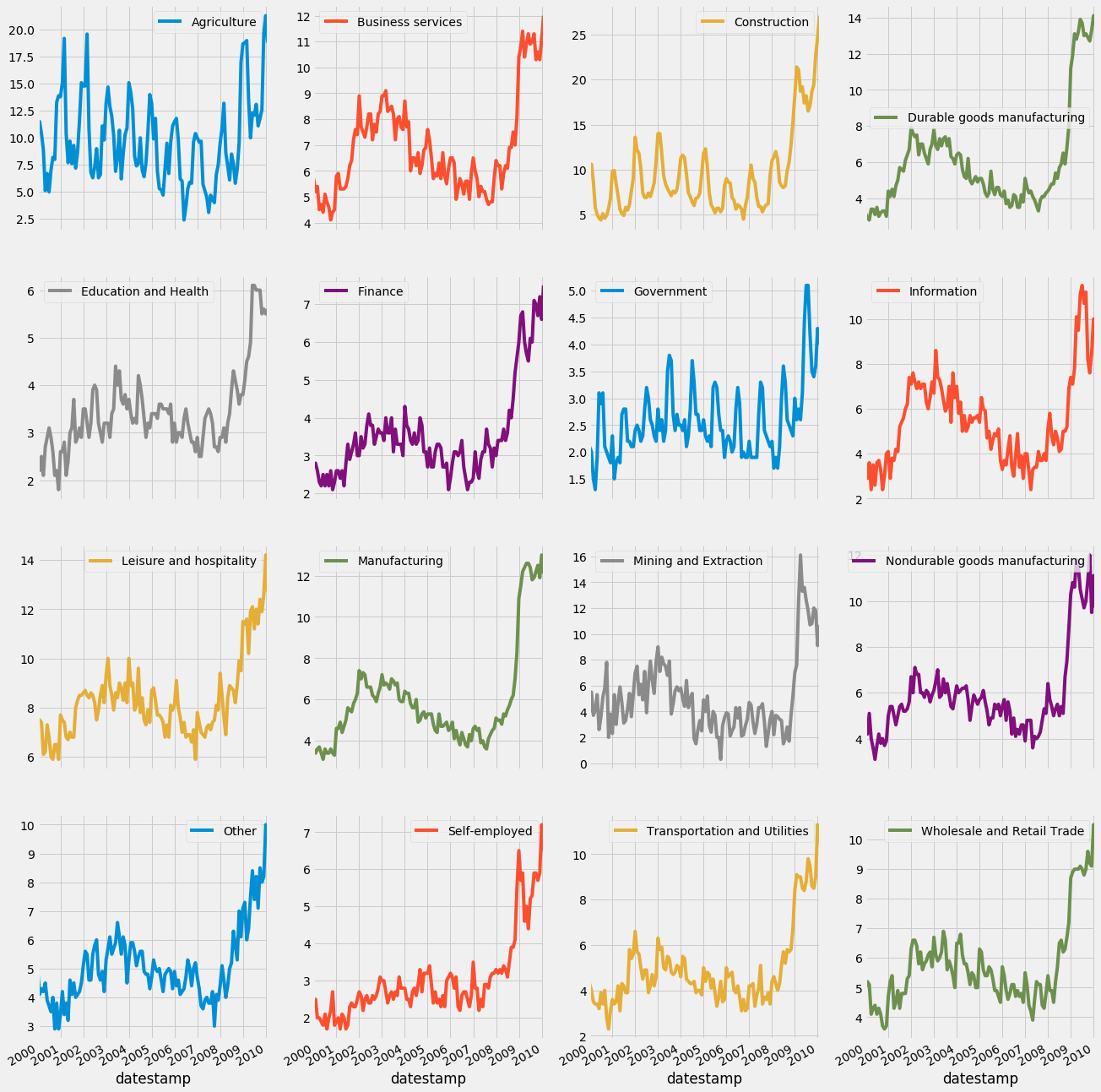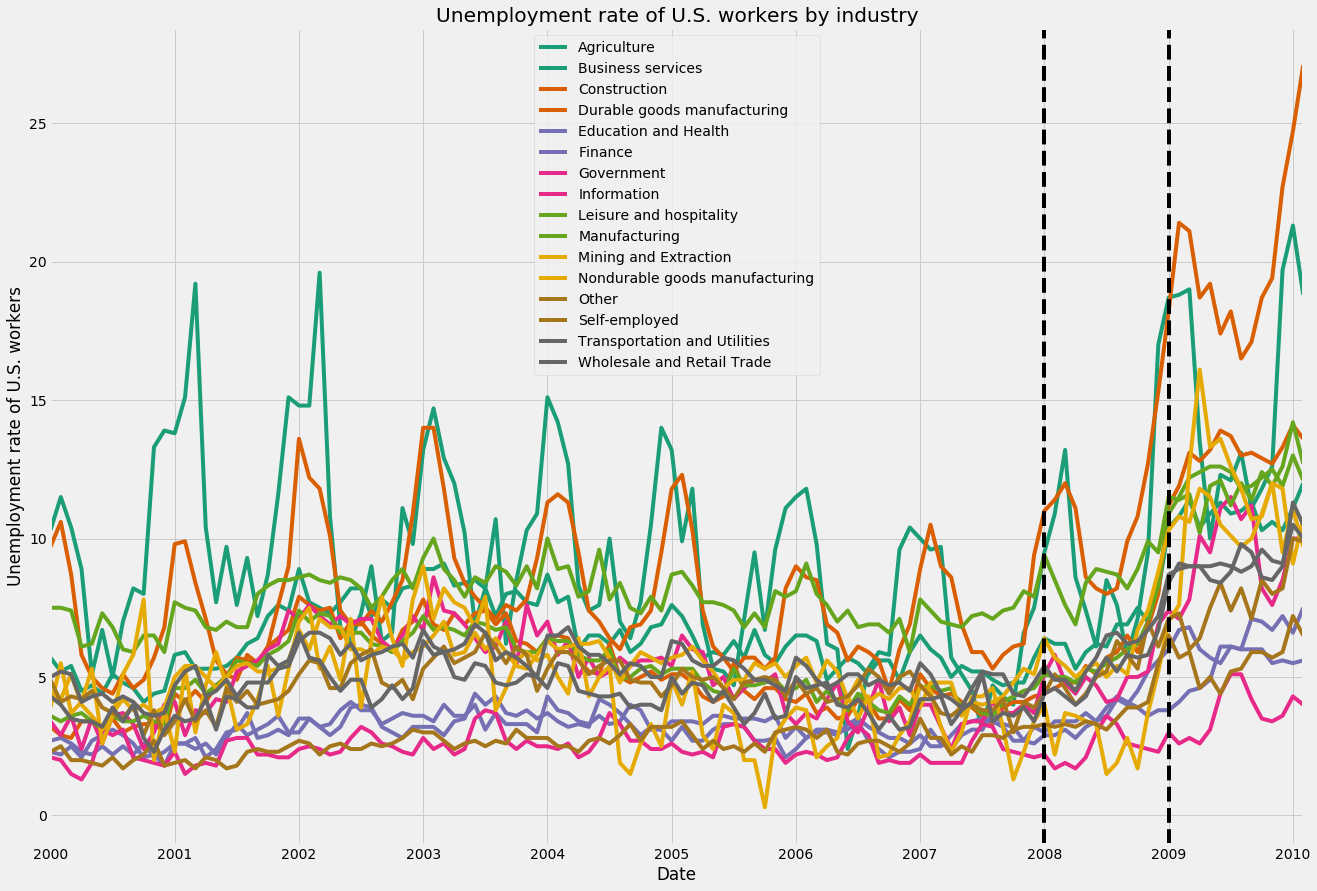Beyond summary statistics
Visualizing Time Series Data in Python

Thomas Vincent
Head of Data Science, Getty Images
Facet plots of the jobs dataset
jobs.plot(subplots=True,
layout=(4, 4),
figsize=(20, 16),
sharex=True,
sharey=False)
plt.show()

Annotating events in the jobs dataset
ax = jobs.plot(figsize=(20, 14), colormap='Dark2')ax.axvline('2008-01-01', color='black', linestyle='--') ax.axvline('2009-01-01', color='black', linestyle='--')

Taking seasonal average in the jobs dataset
print(jobs.index)
DatetimeIndex(['2000-01-01', '2000-02-01', '2000-03-01',
'2000-04-01', '2009-09-01','2009-10-01',
'2009-11-01', '2009-12-01','2010-01-01', '2010-02-01'],
dtype='datetime64[ns]', name='datestamp',
length=122, freq=None)
index_month = jobs.index.month
jobs_by_month = jobs.groupby(index_month).mean()
print(jobs_by_month)
datestamp Agriculture Business services Construction
1 13.763636 7.863636 12.909091
2 13.645455 7.645455 13.600000
3 13.830000 7.130000 11.290000
4 9.130000 6.270000 9.450000
5 7.100000 6.600000 8.120000
...
Monthly averages in the jobs dataset
ax = jobs_by_month.plot(figsize=(12, 5),
colormap='Dark2')
ax.legend(bbox_to_anchor=(1.0, 0.5),
loc='center left')
Monthly averages in the jobs dataset

Time to practice!
Visualizing Time Series Data in Python

